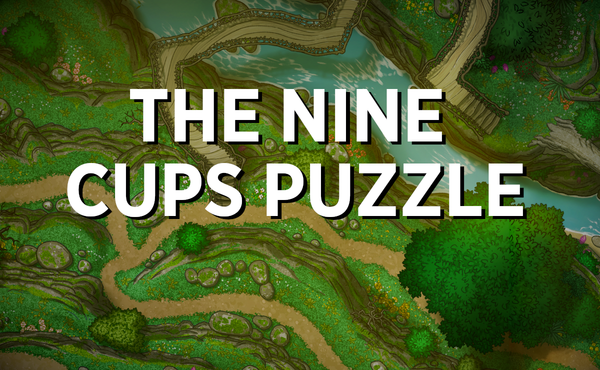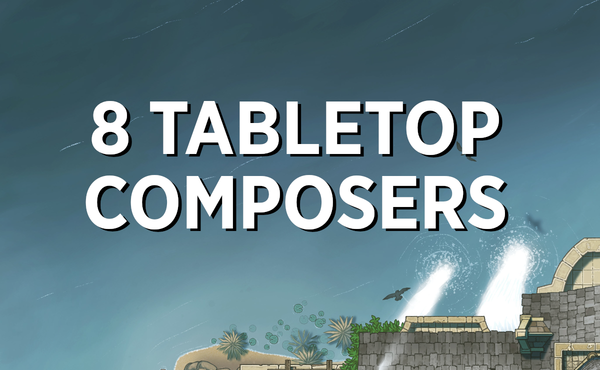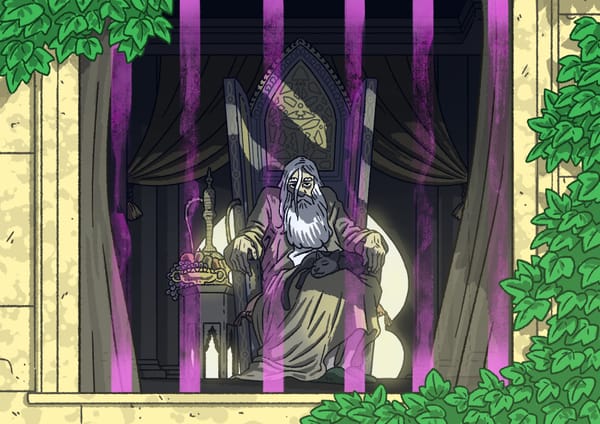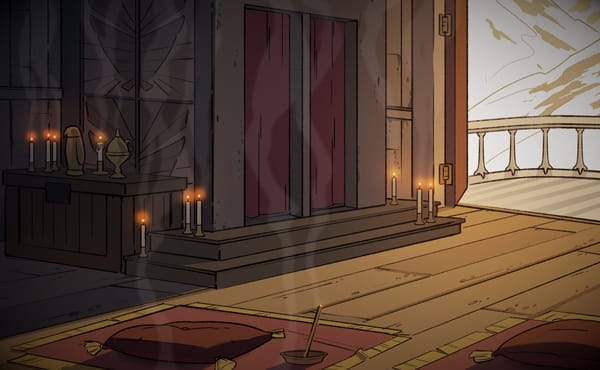Run Tabletop Campaigns with Hybrid Theater
Halfway between theater-of-the-mind and strict use of tactical batlemaps, Hybrid Theater is an ideal way to run tabletop campaigns.
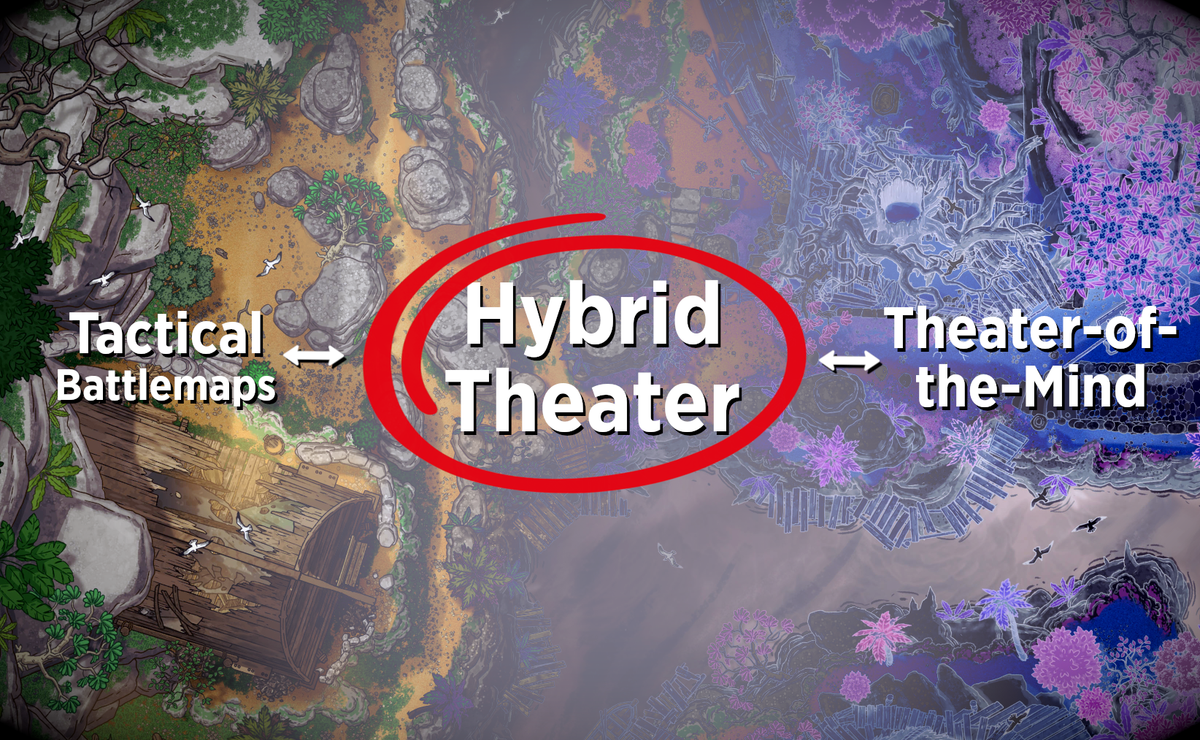
There are two kinds of GMing, right? You either go full wargamer mode with battlemaps, carefully measuring distance, maximizing tactical rigor and complexity, or you have a totally loosey-goosey theater-of-the-mind approach in which all the players might as well have their eyes closed throughout the session.
There are compelling arguments for both styles of GMing. Using maps for every encounter means the players have visual guides to help clarify the geometry of a space, and everyone can play the game “fairly” with no distances, choke-points, or AoEs decided by GM fiat. Art is integrated into the game, and—ideally—exploration and combat borrow the best elements of computer roleplaying games while still allowing for the free-form improvisation that only TTRPGS can provide. Best of all, you get to utilize all those rich features from your virtual tabletop of choice: go nuts with Foundry’s infinitely flexible tools, immerse yourself with Alchemy’s slick UI elements, or use Roll20… for some reason.
Theater-of-the-mind, alternatively, lets players focus solely on roleplaying. Every player can imagine the scene their way, calling to mind vivid landscapes and expressive characters based purely on the GM’s evocative descriptions. Combat is less fiddly. No stressing out about tokens on printed maps or VTT troubleshooting. Battles prioritize creative descriptions, and the rules enhance play without choking the flow. The experience is streamlined and vivid.
These are the two ways that folks talk about playing TTRPGs. I’d like to advocate for a third method of GMing, a sort of halfway point between the total emphasis on tactical battlemaps and the asset-free theater-of-the-mind approach. I call this “Hybrid Theater,” and I’m going to quickly overview what it is and why I like it!
Regardless of how you incorporate visuals into your game, we always recommend bringing music to the table! Our Ruvatello EP has some ultra cozy resort vibes.
Hybrid Theater is a GMing style that uses images to anchor imagination without enforcing tactical precision.
The Basics
You and your pals meet either online or in-person for your session—either option is fully compatible with Hybrid Theater. When the players explore a space for which either the aesthetics or the geometry are important, you show them an image of that space. Typically, this’ll be a topdown battlemap, but maybe it’s a “scene”—our pals over at Czepeku have a huge range of scenes, but we also publish a wide range of illustrations meant to depict our boroughs from other angles.
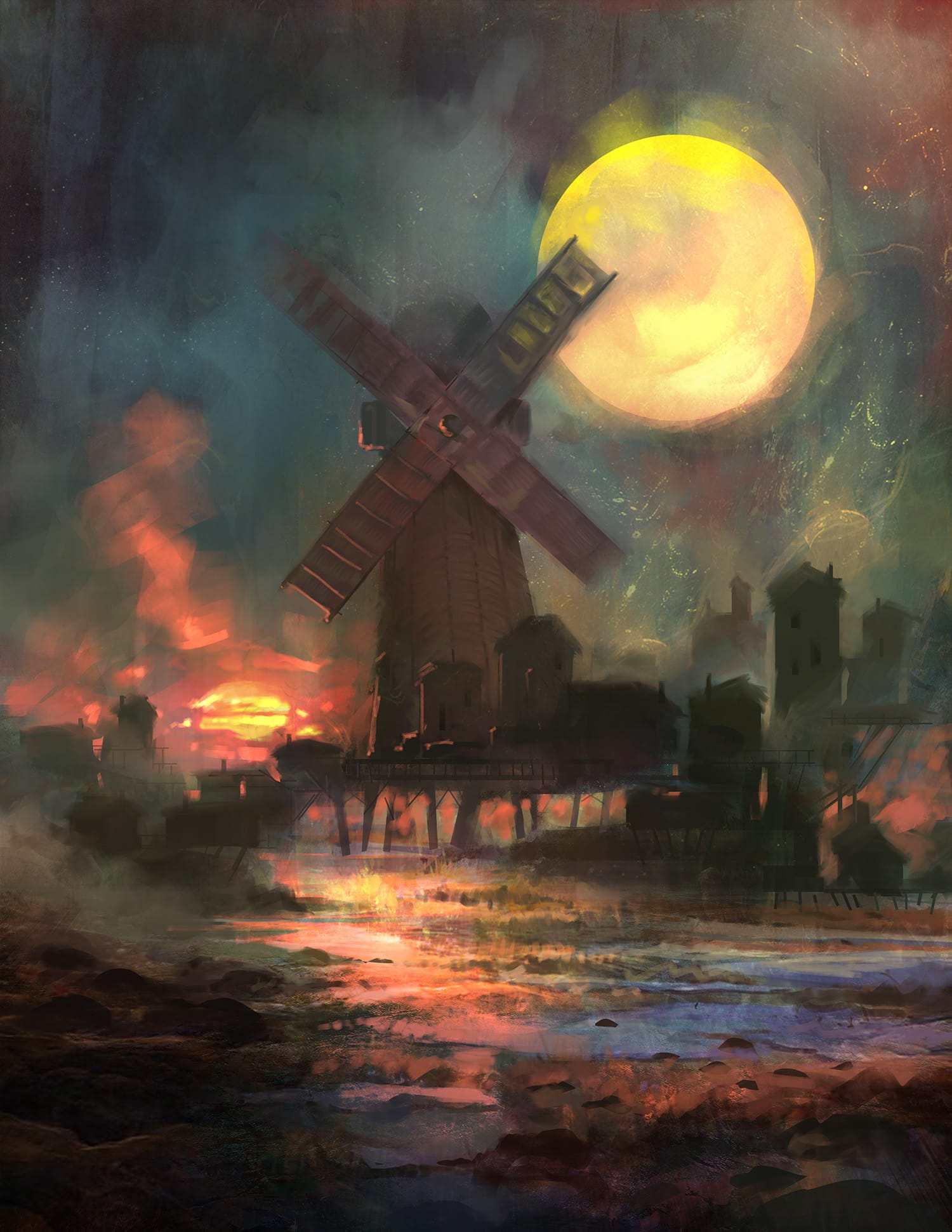
For some interactions, you might instead opt to show an image of an NPC, an important artifact, or an-universe document. If you’re meeting online, show your players the relevant image by sharing your screen, or load it up in a VTT if you still feel like using one. Hell, you could just send the jpg to everyone via Discord chat. If meeting in person, you can print handouts, cast the image to a TV, or just turn your laptop screen toward your pals.
When the players want to go somewhere, they tell you where. “Oh, I want to see if I can climb up on that rooftop,” one says. You ask them to clarify which one; they can either point, or you can mouse over the two options and let them clarify. You say it’s fine for them to climb up, and they say they do. Notice: I never mentioned a token. That’s the beauty and simplicity of Hybrid Theater. You don’t need tokens. You don’t need any dedicated software. You don’t need to print stuff out at the exact right 1-inch scale. You just show your players an image and let them make decisions. If you worry you’ll forget where someone is, just make a quick note in a google doc, spreadsheet, or on a napkin. “Player x climbed onto rooftop.” That's plenty.
The player wants to know if they can fire their bow from this vantage point and target one of the goblins in the streets. If you were playing strict theater-of-the-mind—sans images—it would be much harder to visualize this. If you were leaning into the tactical maps more fully, you’d have to measure and see if the goblin is properly within range. With Hybrid Theater, the GM just makes a ruling. “Sure,” you say. If they ask how far the goblin is, you can either give a rough range (“pretty close!”) or give a number (“about 20 feet”). As long as you broadly rule in a way that satisfies the players, they won’t cause too much of a fuss.
NOTE: Hybrid Theater works best when your players trust you to adjudicate questions fairly and consistently. When in doubt, rule in favor of the player or let a roll decide. Tactical decisions should be fun, not arbitrary.
Facilitate Non-Combat Encounters
Do you really need to whip out a detailed map with dozens of tokens to help roleplay a murder mystery at a dinner party? I’d argue no, but it’ll be easier to GM that dinner party if the players have some sort of visual representation of the mansion’s layout. With even a simple blueprint, a player can point to the second floor bathroom and say “I could hide in there and overhear a conversation in the dining room, right?” You didn’t need a VTT for the player to make that assessment, but the presence of any map at all made it possible.
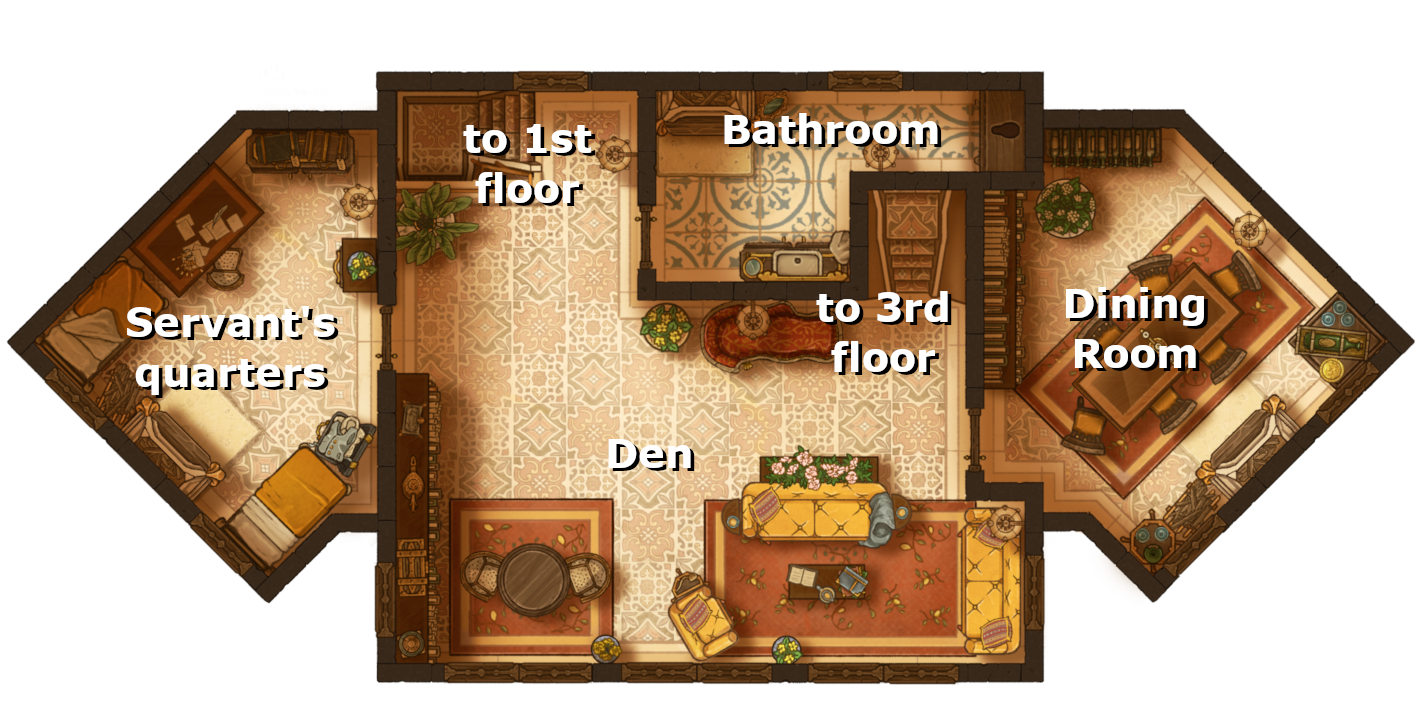
Or, instead, imagine the party is exploring a thick, enchanted wood. The woods are explicitly not mappable; the trees shift around as the party tries to explore, and the layout is never quite the same. To put tokens on a battlemap would be nonsensical. However, your players would certainly appreciate some sort of visual representation. What sort of trees? What’s the vibe? How dense are we talking? Dirt path or twisted road? Can I see the sky overhead? Wait a second… is that a candle in the hollow of one of the trees? Is that a clue? You bet your ass it is! The visual aid just facilitated some puzzle solving in a way that a battlemap couldn’t and pure imagination might actually stifle.
Okay, how about an interrogation? The party needs to figure out which of three suspects stole the king’s scepter. The three suspects have unique personalities, and you do your best to give each a distinct vocal cadence, but you’re hardly Matt Mercer. If you put an image of the three characters up in front of the players, it’ll be easier for them to remember “ah right, this is the deceitful lord with the stupid mustache, not the swordswoman with the shaved head.”
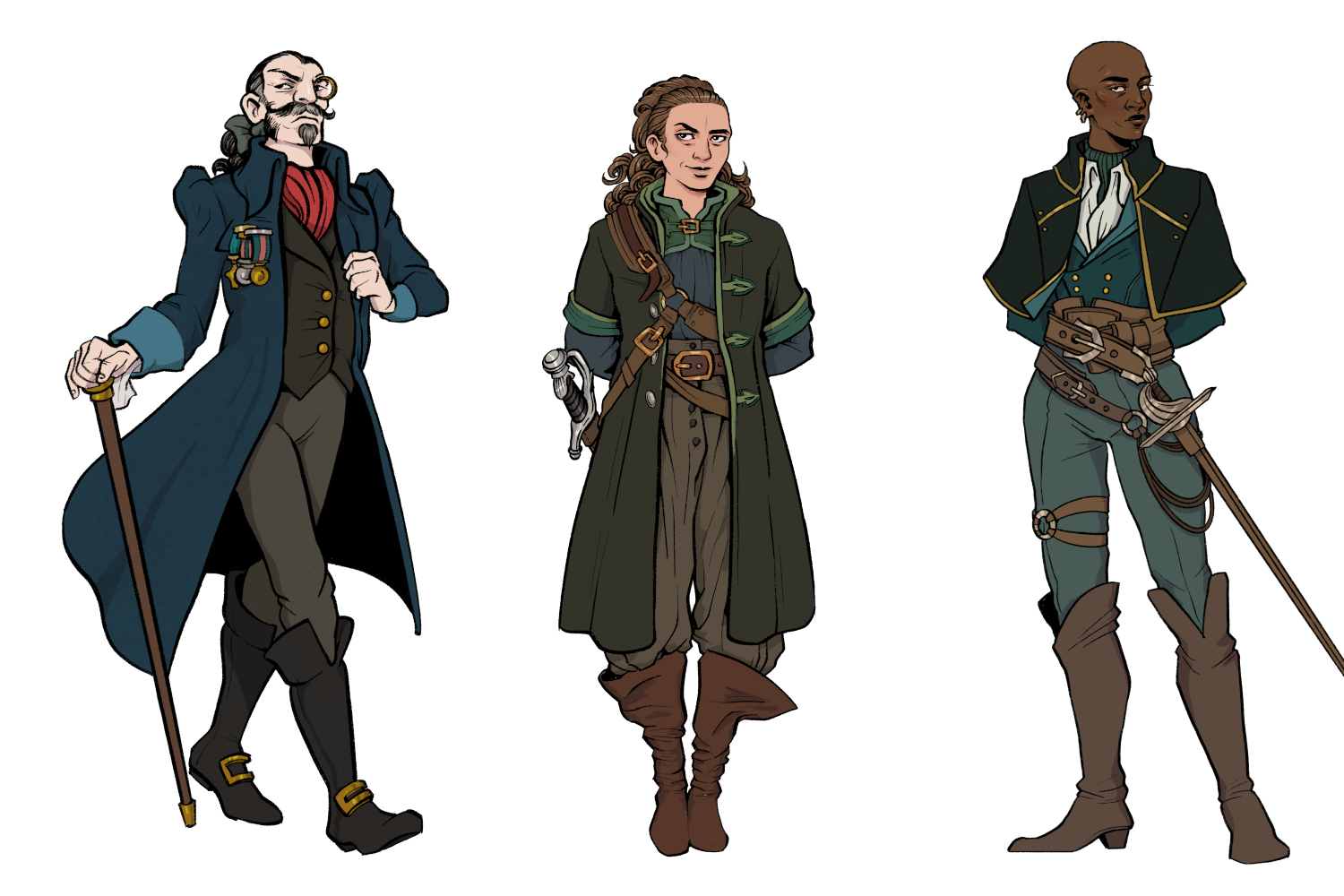
Would any of these scenes benefit from traditional battlemap usage? Or would they be easier to GM with no images whatsoever? I think each is improved by the presence of images, but you don’t need to make it any more technical than that.
Okay… And?
So, wait, Hybrid Theater is just theater-of-the-mind but with images? That’s it? Yeah, basically!
This approach might sound simple, but here’s why it often works better than either extreme. Hybrid Theater solves a few key problems with the two primary methods of GMing. These are the 4 key pillars of Hybrid Theater: Streamline, Clarify, Hand-Wave, and Immerse
Streamline interactions. Skip the VTT. Don’t worry about tokens. Don’t measure distances. If you’re focusing on the narrative, the rules of your RPG are likely robust enough to handle simplifying distances and geometry. Does it really make your session more fun if you’re obsessing over whether someone is 30 or 35 feet away? I’d argue it’s better to make a quick ruling than to start whipping out the Pythagorean Theorem.
Clarify geometry. My wife is my favorite player I’ve ever GM’d for. She’s an incredible improviser, and she regularly comes up with ingenious solutions to narrative and mechanical obstacles. She also has a notably difficult time keeping the shape of a space in her head without a visual aid. When playing theater-of-the-mind, I can say exactly what a combat arena looks like and who’s where, but it just doesn’t stick. Incorporating a single image to elucidate the relative locations of points-of-interest and being able to gesture to a given character’s location at any time dramatically improves her experience. I suspect the world is filled with players like her who just kinda zone out when a GM attempts to artfully describe a space.
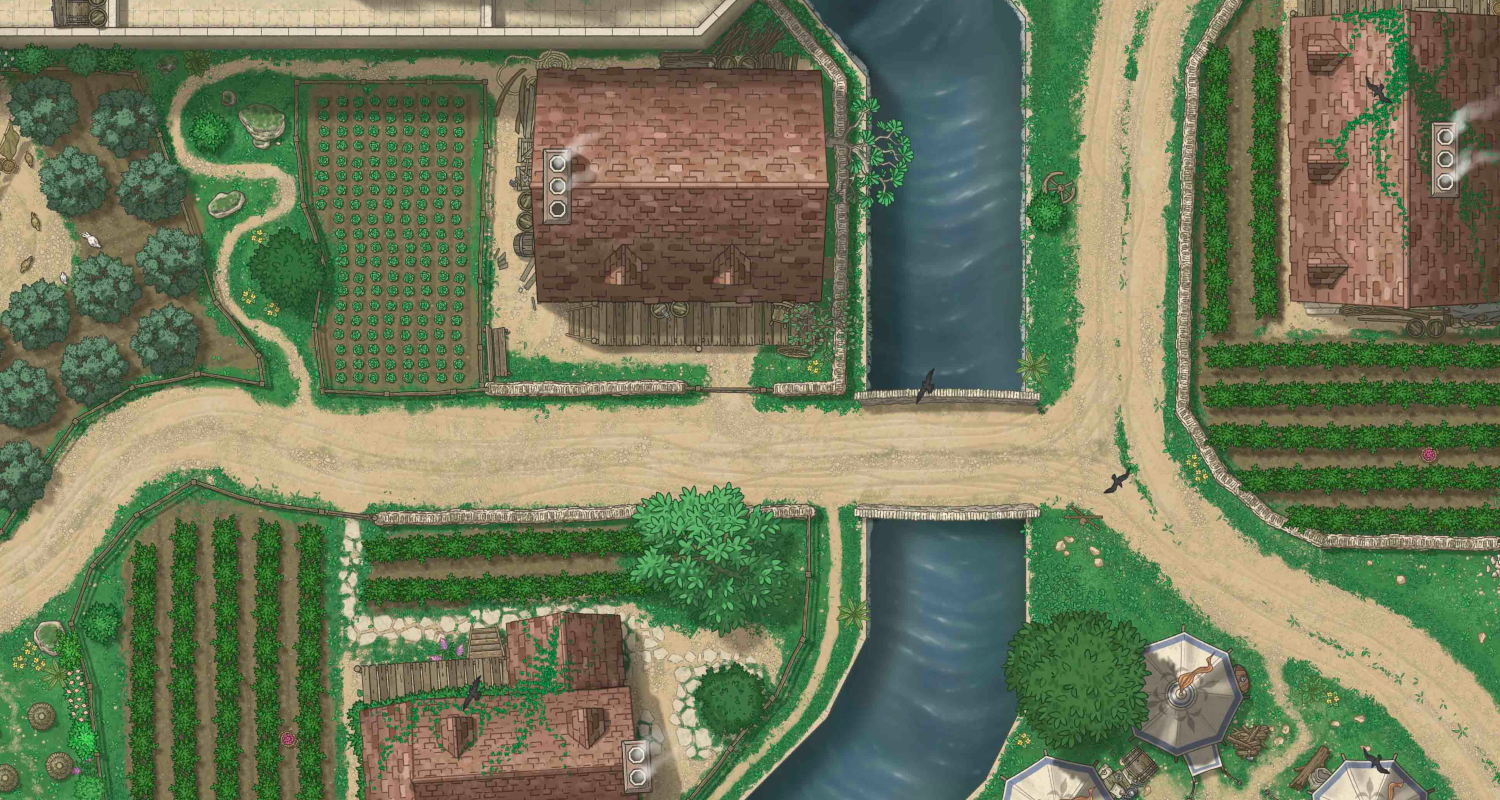
Hand-wave and create excuses for leeway. There’s nothing more obnoxious than realizing the map you chose for an encounter just doesn’t suit your needs as a GM. Maybe a fight becomes a chase, but you suddenly realize the party’s monk can traverse the entire length of the map in a single round. Hybrid Theater lets you say “yeah, that’s the rough shape of the space, but it’s actually much larger than this scale would imply.” Now, the chase can extend beyond the fringes of the map without feeling like you’ve suddenly run out of runway. I find that strictly interpreting scales of maps often limits mechanical nuance instead of enriching encounters. By treating your visual aids impressionistically, you’re able to nudge an encounter until the specifics of the geometry match your gameplay goals.
Bolster immersion. Strict advocates of theater-of-the-mind will say that focusing entirely on imagination allows players to create more vivid scenes in their heads than anything a talented artist can put to paper. To that, I’d say: debatable! Look, I’m not saying every fantasy novel would be better with illustrations on every page, but when your friends need to get on the same page while talking to an NPC or exploring a dungeon, I think it’s often beneficial to present some form of visual representation. You don’t need a full 3D mock-up of a location that they can explore from every angle. In fact, sometimes an image that solely captures the party’s imagination—an evocative scene that doesn’t necessarily strictly depict details—works best. And, of course, if you ever want to rely on imagination first and foremost, you don’t need to use art for every single NPC or location.
Compromise and Empathize
If you’re reading this right now, I suspect you feel strongly that RPGs are either always better with rigorous use of tactical battlemaps or by focusing solely on the narrative. I’m asking you to consider the many types of players you are likely to have at your table:
- Tired gamers who don’t want to deal with tech hassle during their 3 hours of gaming per week
- Visual learners
- Players who have trouble with attention and need extra stimulus to stay focused
- Strategists who like thinking tactically
- Your rogue with one attack per turn who finds out the target of his next attack is actually 5 feet out of range, and so he’ll have wait another 30 minutes for a chance to deal damage
Hybrid Theater will help you run campaigns that meet the needs of each of your players. Be generous. Show, don’t tell. Let your players make bold decisions, but give them visual stimulus to help them make informed decisions. No two parties have the same needs, but it’s always worthwhile to consider how visual aids might enhance a session.

